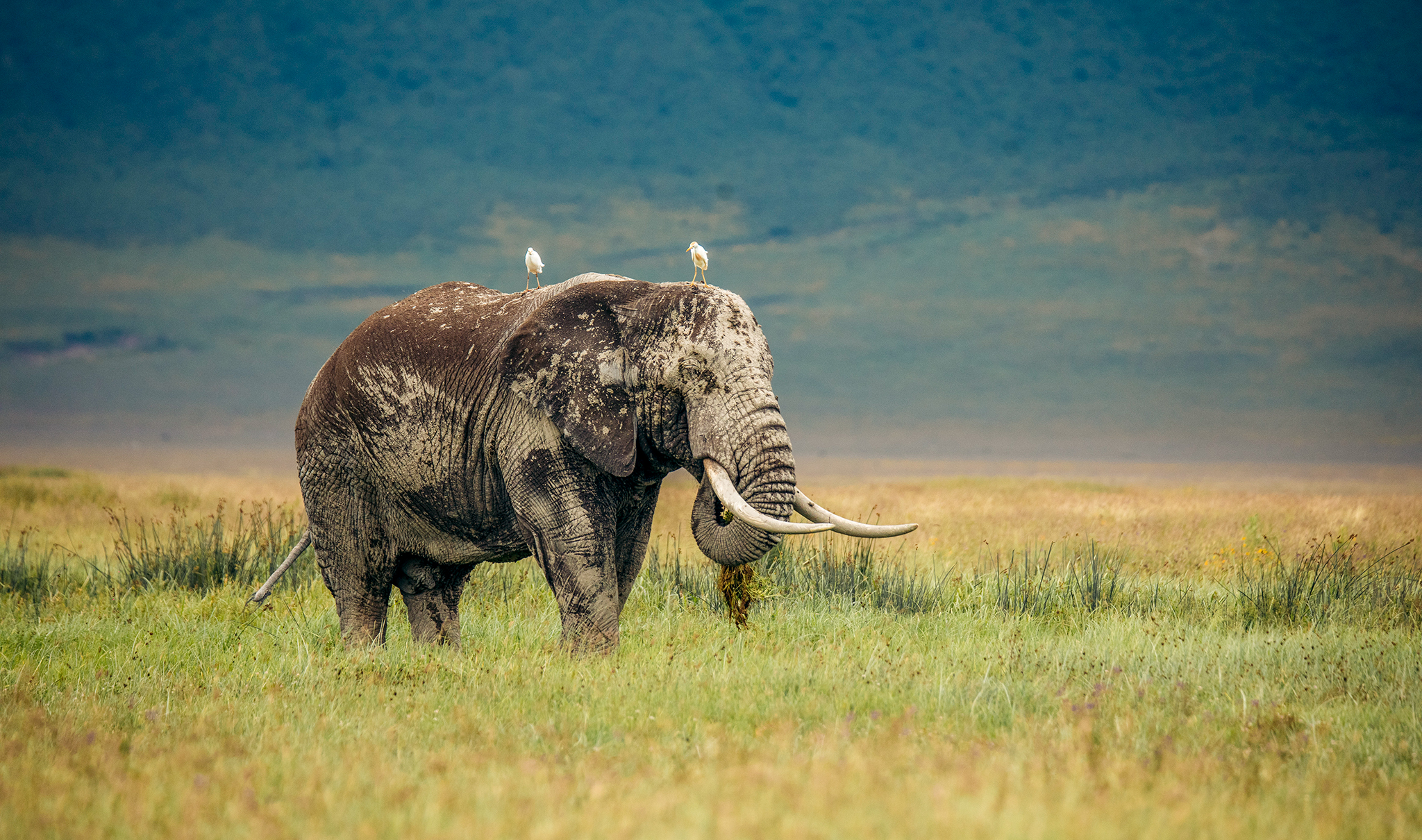The Ngorongoro Crater is one of the few places on Earth where you can witness the dense congregation of African wildlife within a small area. With roughly 25,000 large animals calling it home, this UNESCO World Heritage site offers an unparalleled safari experience. The breathtaking scenery serves as a backdrop to this spectacle of nature.
A visit to the Ngorongoro Crater presents opportunities to observe a variety of species. Among the prevalent wildlife are the black-maned lions, black rhinos, and herds of wildebeests and zebras. Moreover, you may encounter elephants, hippos, and an array of bird species, making the crater a notable hotspot for biodiversity.

Wildlife Diversity in the Ngorongoro Crater
The Ngorongoro Crater is a biodiversity hotspot, teeming with a wide array of animal species. The crater walls form a natural enclosure, creating a unique ecosystem. You can spot black-maned lions, endangered black rhinos, elephants, and a large population of wildebeests and zebras. This variety makes the crater a prime location for wildlife enthusiasts. According to this post, the Ngorongoro Crater will remain a top safari destination.
Birdwatchers will be thrilled by the numerous bird species that inhabit the crater. From flamingos to ostriches and even the rare kori bustard, the diversity is remarkable. The crater’s lakes and forests provide the perfect habitat for these birds. Birdwatching can be particularly rewarding during the migratory seasons. This adds another layer of excitement to any [Tanzania safari](https://www.lappetfacedsafaris.com/safari-in-tanzania/).
Predators abound in this ecosystem as well. Beyond the lions, you may encounter leopards, cheetahs, and serval cats. Hyenas and jackals also roam the crater, scavenging for food. The interaction between predators and prey is fascinating to observe. These dynamics offer a glimpse into the raw beauty of nature.
According to the article, the crater is one of the few places where you can spot the endangered black rhino. Conservation efforts have helped stabilize their population here. These majestic creatures are often seen grazing on the crater floor. Spotting one can be a highlight of your visit. It emphasizes the importance of conservation in maintaining wildlife diversity.
Predators and Prey: A Unique Symbiosis
The Ngorongoro Crater is a natural arena where predators and prey coexist in a delicate balance. This unique environment offers an exceptional opportunity to witness the full spectrum of the food chain. Lions, often seen lounging in the grasses, are at the top of this chain. Their primary prey includes zebras, wildebeests, and buffaloes. The relationship between these predators and their prey is pivotal for the ecosystem’s stability.
Other predators such as leopards and cheetahs also play critical roles. Leopards are elusive but crucial hunters, often capturing smaller antelopes or even baboons. Cheetahs, known for their speed, target gazelles and other small to medium-sized herbivores. Their hunting techniques are fascinating and highly specialized. Each predator species adapts differently to its environment.
Hyenas and jackals are essential scavengers in this ecosystem. While hyenas can hunt, they often scavenge from lion kills. Jackals are opportunistic feeders, taking whatever they can find, from small rodents to carrion. These scavengers help keep the environment clean by consuming leftovers. Their presence ensures that no food goes to waste.
This predator-prey dynamic illustrates nature’s complexity. Each interaction highlights the interdependence of species. Watching these animals in their natural habitat provides profound insights into ecological relationships. Such experiences leave visitors in awe of Mother Nature’s design. Capturing these moments on a [Tanzania safari](https://www.lappetfacedsafaris.com/safari-in-tanzania/) can be truly unforgettable.
Endangered Species and Conservation Efforts
The Ngorongoro Crater is home to several endangered species. Among these is the black rhino, whose population has sharply declined due to poaching. Conservation efforts have helped to protect these incredible animals. Rangers patrol the area continuously to prevent illegal hunting. Their work is vital in ensuring the survival of these majestic creatures.
Another endangered species found in the crater is the African elephant. These giants face threats from habitat loss and ivory poaching. Various conservation projects aim to protect them. For instance, creating wildlife corridors helps elephants move safely between habitats. Such initiatives are essential for maintaining their population.
The unique ecosystem of the Ngorongoro Crater also supports vulnerable species like the African wild dog. This rare predator is now rarely seen, but efforts are underway to reintroduce them. Collaboration with local communities plays a crucial role. Educating the public about preserving wildlife is part of the strategy.
According to this article, spotting these endangered species can be a highlight of any visit. It underscores the importance of ongoing conservation work. By protecting these animals, the natural balance of the ecosystem is maintained. Every visitor to the crater contributes to these efforts. Supporting conservation initiatives ensures the diversity of [Tanzania Wildlife](https://www.lappetfacedsafaris.com/safari-in-tanzania/) for future generations.
Seasonal Wildlife Viewing Opportunities
Visiting the Ngorongoro Crater offers unique wildlife viewing opportunities that change with the seasons. During the dry season from June to October, animals gather around the few remaining water sources. This makes it easier to spot larger herds and diverse species. Predators are more active during this period as they hunt for prey. Additionally, the roads are more navigable, making safaris more accessible.
The wet season, which lasts from November to May, also has its perks. The crater transforms into a lush, green paradise, attracting migratory birds. This is the prime time for birdwatching enthusiasts. The landscape blooms with wildflowers, creating perfect backdrops for photography. However, the rain can make roads muddy and challenging to traverse.
Each season offers something different. By understanding these seasonal changes, you can plan your visit to maximize wildlife sightings. During the calving season in late January and February, you can witness thousands of wildebeest giving birth. This attracts predators, making for some thrilling wildlife interactions. Timing your visit to coincide with these events enhances your safari experience.
Rainfall and water sources play crucial roles in animal behavior. When planning a [Tanzania safari](https://www.lappetfacedsafaris.com/safari-in-tanzania/), knowing the seasonal patterns helps in predicting animal movements. You can use local guides to find the best spots based on the time of year. Guides have the expertise to track and locate animals, making your safari more successful.
Here is a table summarizing the best times for wildlife viewing:
| Season | Highlights | Challenges |
|---|---|---|
| Dry Season (June – October) | Best for seeing large herds and predators | Higher visitor numbers |
| Wet Season (November – May) | Excellent birdwatching, lush landscapes | Muddy roads, less accessible |
According to this post, the Ngorongoro Crater remains a top destination throughout the year. With its diverse wildlife and stunning landscapes, planning your trip according to seasonal patterns can enhance your experience. Whether you’re a seasoned traveler or a first-time visitor, the crater always has something spectacular to offer.
Key Takeaways
- The Ngorongoro Crater hosts a wide range of wildlife species.
- You can see black-maned lions and endangered black rhinos there.
- The crater is home to large herds of wildebeests and zebras.
- Birdwatching highlights include flamingos and ostriches in the crater.
- This destination provides an exceptional variety of ecosystems to explore.

